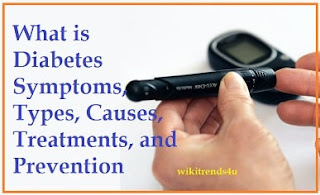Motion Sickness Causes, Symptoms, and Criteria | Complete Guide 2025
Motion Sickness: Causes, Symptoms, and Criteria to Recognize & Manage
Motion sickness is a common condition experienced by many during travel by car, boat, airplane, or even amusement rides. It can cause discomfort, nausea, and dizziness, affecting daily activities and travel plans. Understanding the causes, symptoms, and diagnostic criteria of motion sickness can help individuals better manage and prevent it effectively.
What Is Motion Sickness?
Motion sickness occurs when there is a conflict between the signals received by your brain from your inner ear, eyes, and deeper parts of your body that sense motion. This sensory mismatch leads to symptoms such as nausea and dizziness. While it's usually temporary, severe cases can significantly disrupt travel and daily life.
Common Causes of Motion Sickness
- Travel by vehicle: Car, bus, train, boat, or airplane journeys.
- Visual stimuli: Looking at movement or screens in moving environments.
- Inner ear disturbances: Balance-related issues affecting the vestibular system.
- Genetic predisposition: Some individuals are more prone due to genetic factors.
- Medications or health conditions: Certain medications or underlying health issues can increase susceptibility.
Symptoms Indicative of Motion Sickness
Recognizing the symptoms early can help in managing the condition. Common symptoms include:
- Nausea and queasiness
- Dizziness or a sensation of imbalance
- Cold sweats
- Salivation or increased saliva production
- Vomiting in severe cases
- Headache or fatigue
Diagnosis and Criteria for Motion Sickness
Motion sickness is primarily diagnosed based on clinical history and symptom criteria. The key criteria include:
- Temporal relationship: Symptoms appear during or shortly after exposure to motion stimuli.
- Reproducibility: Symptoms recur with repeated exposure to similar motion conditions.
- Absence of other medical causes: Symptoms are not attributable to other underlying health issues.
- Characteristic symptoms: Nausea, dizziness, cold sweats, and vomiting are consistent features.
- Impact: Symptoms interfere with normal functioning or travel plans.
Tips to Prevent and Manage Motion Sickness
- Sit where motion is least felt, such as the front seat in a car or mid-ship on a boat.
- Avoid heavy meals before travel.
- Stay hydrated and breathe fresh air if possible.
- Use over-the-counter remedies like antihistamines (e.g., dimenhydrinate), but consult your doctor.
- Focus on the horizon or a fixed point outside the vehicle.
- Take short breaks during long journeys to reduce symptoms.
When to Seek Medical Advice
If motion sickness persists despite these measures or severely impacts your quality of life, consult a healthcare provider. They can prescribe medications, recommend behavioral therapies, or suggest other interventions to alleviate symptoms.
Conclusion
Understanding the causes, symptoms, and diagnostic criteria of motion sickness is essential for effective prevention and treatment. With proper strategies, most individuals can enjoy travel and outdoor activities without discomfort. Stay informed, take precautions, and consult health professionals when needed to ensure smooth and enjoyable journeys.
Are you frequently affected by motion sickness? Share your experiences or ask questions in the comments below! For personalized advice, consult your healthcare provider today.











